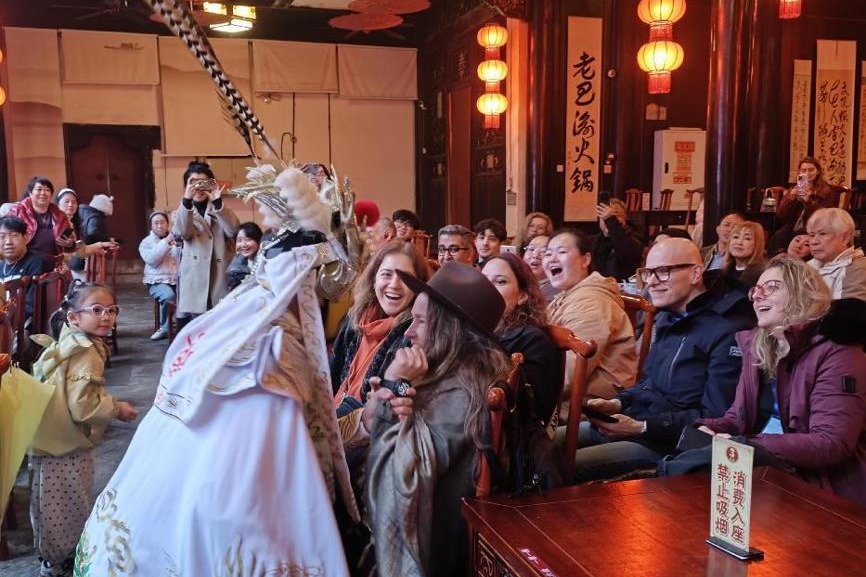Researcher works flat-out to find COVID-19 cure


It takes about 15 minutes for Wang Qihui, a researcher with the Institute of Microbiology at the Chinese Academy of Sciences, to walk home from work. Yet this seemingly short distance felt unusually long for Wang and her family during the COVID-19 epidemic.
When she was busy researching and developing treatment for the novel coronavirus, Wang sometimes spent days toiling in her lab to the dismay of her 5-year-old son, who described his mother in his homework as a workaholic who can't make it home.
"I am very fortunate to have a family that is very supportive of my work, even during the epidemic,"Wang said.
As the outbreak occurred during the Spring Festival holiday, many of the institute's staff members had already gone home, including the cooks. However, Wang's research had to continue, so her mother-in-law cooked meals and delivered them to the lab on foot every day.
"We were dealing with a new and very difficult pathogen, and it would be an understatement to say we were under a lot of pressure,"Wang said. "Yet everyone on our team had this fire that kept pushing us to work harder, so we could produce an effective vaccine and treatment as quickly as possible."
During the epidemic, Wang's research included investigating how the virus is transmitted between species and how it binds to receptors and enters cells, as well as developing a therapeutic antibody treatment.
"We were able to systematically tackle the novel coronavirus because our team has been researching contagious diseases around the world for years, and we have the basis and mechanisms necessary to quickly mobilize and respond to new public health threats," Wang said.
In 2012, after gaining her doctorate, Wang joined a team led by Gao Fu, a noted virologist and director of the Chinese Center for Disease Control and Prevention.
Since then, Wang and her colleagues have been busy studying countless pathogens.
"Many of the viruses we examined have either had limited or no outbreaks in China, therefore not many people are familiar with our work," she said. "But understanding how a virus transmits and interacts with our bodies is just as crucial for safeguarding public health as treating patients."
Wang said there have been many trials and errors while researching a pathogen as complex and alien as the coronavirus, and after nearly a year of intensive research many questions remain unanswered.
"If one research method didn't work, we had to quickly adapt and change our approach because we were racing against the clock," she said. The work was so intense that she experienced temporary hearing loss in her left ear due to stress and exhaustion.
The doctor urged her to stay in the hospital for at least a week, but Wang left on the fifth day because she was eager to return to work.
"I am only one of many researchers across China who are pushing their limits to produce more insight about the virus," she said.
"Never have I felt my research to be so connected to the fate and well-being of the nation. This feeling that the entire country is depending on and supporting you is unprecedented and extremely powerful."
This year, Wang not only will continue her rigorous research to learn more about the coronavirus, she will also spend some of her free time popularizing science and her work to the public.
- Macao thrives as collaboration deepens
- Beijing reiterates strong opposition to US arms sales to Taiwan
- Attack in Taipei injures 9, including 4 in critical condition: local media
- Ministry to launch month-long program aimed at promoting youth employment
- National health body asks consumers to read nutritional information on food labels
- China's top cyberspace regulator launches drive against capital market misinformation




































